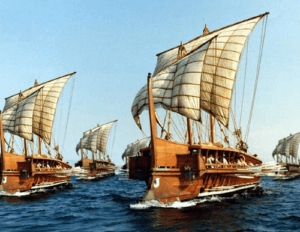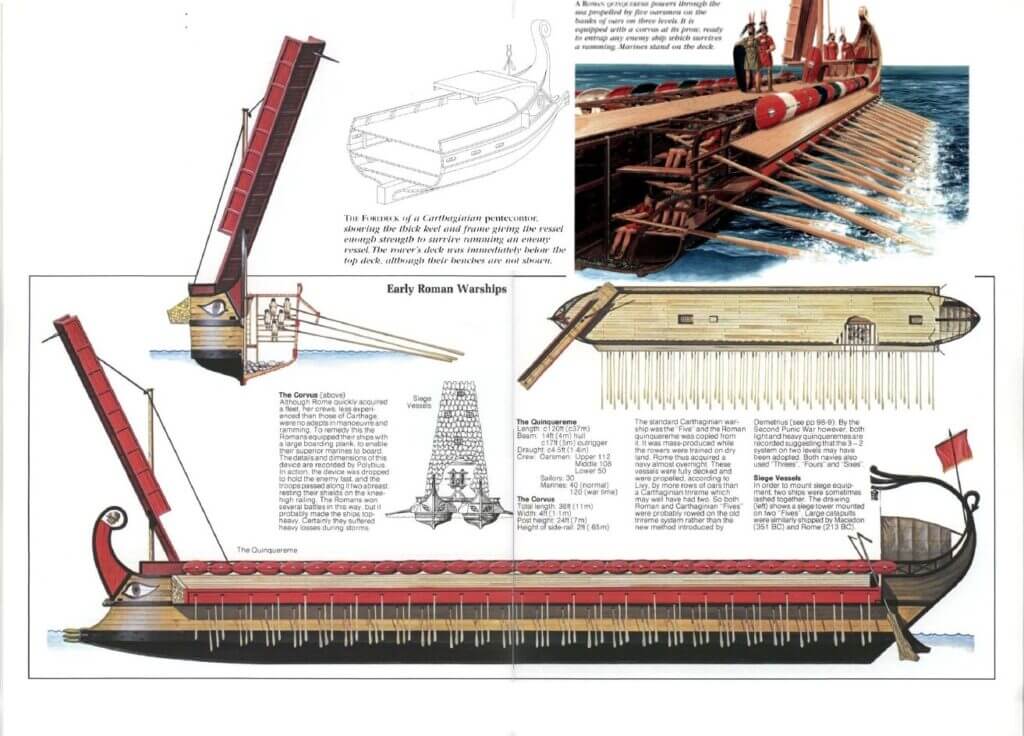Don’t play the game, change the game
The world’s greatest sea battle was fought in Cape Ecnomo (what we now call Poggio di Sant’Angelo, Sicily) between Rome and Carthage in 256 BC.
The Carthaginians had the most excellent navy fleet in the world; they dominated the Mediterranean with 350 ships and 150.000 soldiers.
The Romans had prepared for this battle with 330 ships and 140.000 men.
So both sides started with roughly the same soldiers and war machines, as far as numbers go.
But numbers don’t tell the whole story.
The Carthaginians knew all about navy battles. Romans knew nothing about navy battles. All the actions they had were on land.

Back then, battleships were moved by the force of men on oars, and the primary weapon was a ram in the bow.
The Carthaginians knew how to maneuver their battleships to destroy the oars and then ram the enemy’s ships on the side, crushing and sinking them.
Romans knew they could be easily beaten in a naval battle, so they didn’t go against what made the Carthaginians strong. They changed the game.
They invented the Corvus, an articulated bridge little more than 1,2m wide and 11m long assembled in the front of each ship.

That bridge would then fall on top of an enemy boat with a huge spike that would maintain the bridge in position while the roman troops boarded the enemy’s ship.
Romans knew that if they could deliver their troops on board an enemy ship, they could transform a sea battle into a land battle.
At Cape Ecnomo, both armies met, and half the Carthaginian fleet immediately attacked the rear of the Roman fleet.
But the Romans retreated and formed a side-by-side line with their boats, facing the sea and the enemy army.
So the Carthaginians couldn’t pass through them. They couldn’t ram them on the side and didn’t dare to attack the front because of the Corvus.
So half the Carthaginian fleet was blocked, unable to do anything, while the other half was rammed and boarded by Roman soldiers using the Corvus.
In the end, the Romans lost only 24 ships and 10.000 soldiers.
The Castgaginian had lost 95 ships and 40.000 soldiers; they were no longer the greatest navy in the world.
The Romans beat them and weren’t a navy power at all. The Romans changed the game to one they were good at. They changed a sea battle into a land battle.
Play to our strengths it’s a clever way to overcome obstacles, rewriting the rules in our favor.
This story led to the creation of a new business model that I describe in “Changing the business model to a successful one.“

